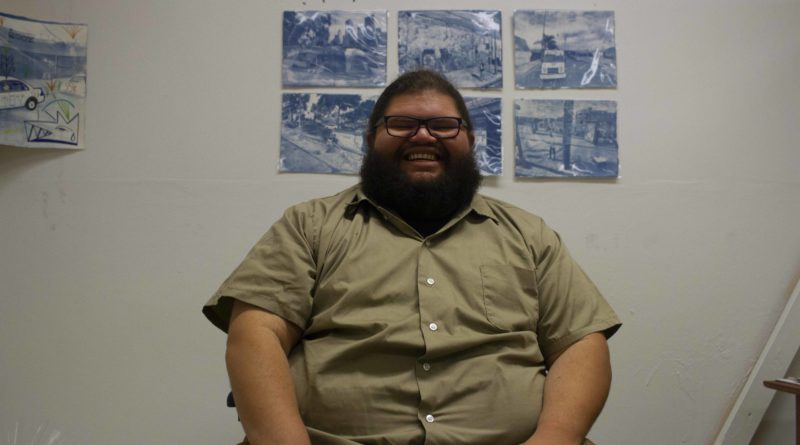HSU alumnus captures city life all over
Artist uses multidisciplinary techniques to capture and document the life of underrepresented people
Artists find nuanced ways of conveying messages within their respective medium, and in photography, Felix Quintana who has gained recognition for his work in this respect. His attention to detail is prominent in his images without compromising the narrative being put forth.
Quintana is a Humboldt State University alumnus currently pursuing his masters of fine arts degree in photography at San Jose State University.
“Like blueprints of architecture, my work reveals the structure of the city where underrepresented people move effortlessly in their world,” Quintana said in an audio piece for SOMAArts Cultural Center. “My creative process takes me back to the roots of photography and drawing where I combine digital media with analog printing technology.”
Images Quintana has produced using this process is among the latest in his line of work. The pieces he produced were displayed at SOMAArts between August and December 2019 in the exhibition “Los Angeles Blueprints.”
Mape Andrews is a fellow graduate student at SJSU who is in the same program as Felix. Andrews says she admires how Quintana finds ways to connect to the Lantinx community in the South Bay, while still remaining tethered to his roots in Los Angeles.
“I think his work is growing with leaps and bounds right now,” Andrews said. “After a year of being in the program, [students’ work] just begins to flourish, and grow, and change. I think he is doing super interesting
things that are very personal, using alternative processes like cyanotype and his drawings.”
The cyanotype photographic printing process requires making a chemical solution in order to produce images on materials, like paper, that ultimately have a blue tone.
Like blueprints of architecture, my work reveals the structure of the city where underrepresented people move effortlessly in their world. My creative process takes me back to the roots of photography and drawing where I combine digital media with analog printing technology.
Felix Quintana
Quintana is an artist of Salvadoran descent who began his multidisciplinary work as a youth wanting to document life with a toy camera.
He said that after buying the toy fisheye camera, he took a digital photography class while attending high school. That interest led to him developing film in a lab at his school in Southeast Los Angeles.
“Our darkroom was actually closed for a long time, and we begged our professor to show us the process – and he did. So, we had our own private darkroom in Lynwood High School. That’s what really got me engaged, and started thinking about going to college for photography,” Quintana said.
Quintana says that the work which got recognition began at HSU after working with former professor Don Gregorio Antón.
The Southeast LA native has had his pieces displayed in numerous galleries in the United States, Mexico and across the Atlantic Ocean in the United Kingdom since the days he attended HSU.
Quintana said he was sold on the idea of attending HSU out of high school upon finding out they had a darkroom for film photography, and experiencing the trip to the campus from Southern California with his late father and younger sibling.
“It was a bond that we were able to create through that [trip],” Quintana said. “If it wasn’t for that, maybe I wouldn’t have been as inclined [to attend]. So, I feel grateful for that.”
After receiving his bachelor’s degree in studio art from HSU, Quintana went back to Los Angeles. Once there he got to meet local artists who are active members of the art scene.
Manuel Lopez, an illustrator based out of East LA, said he met Quintana during his time attending art events. Lopez said that at first he didn’t really understand Quintana’s work, which became fun because he wanted to understand the concepts and execution.
He said that his relationship with Quintana doesn’t really revolve around conversations on their art. They usually have a lot to talk about outside of art, he said, because they come from communities that are being impacted by similar changes.
“I think I met the work before I met the man,” Lopez said. “It oscillated back-and-forth between drawing and photography. It was strange. That’s why he stood out.”




